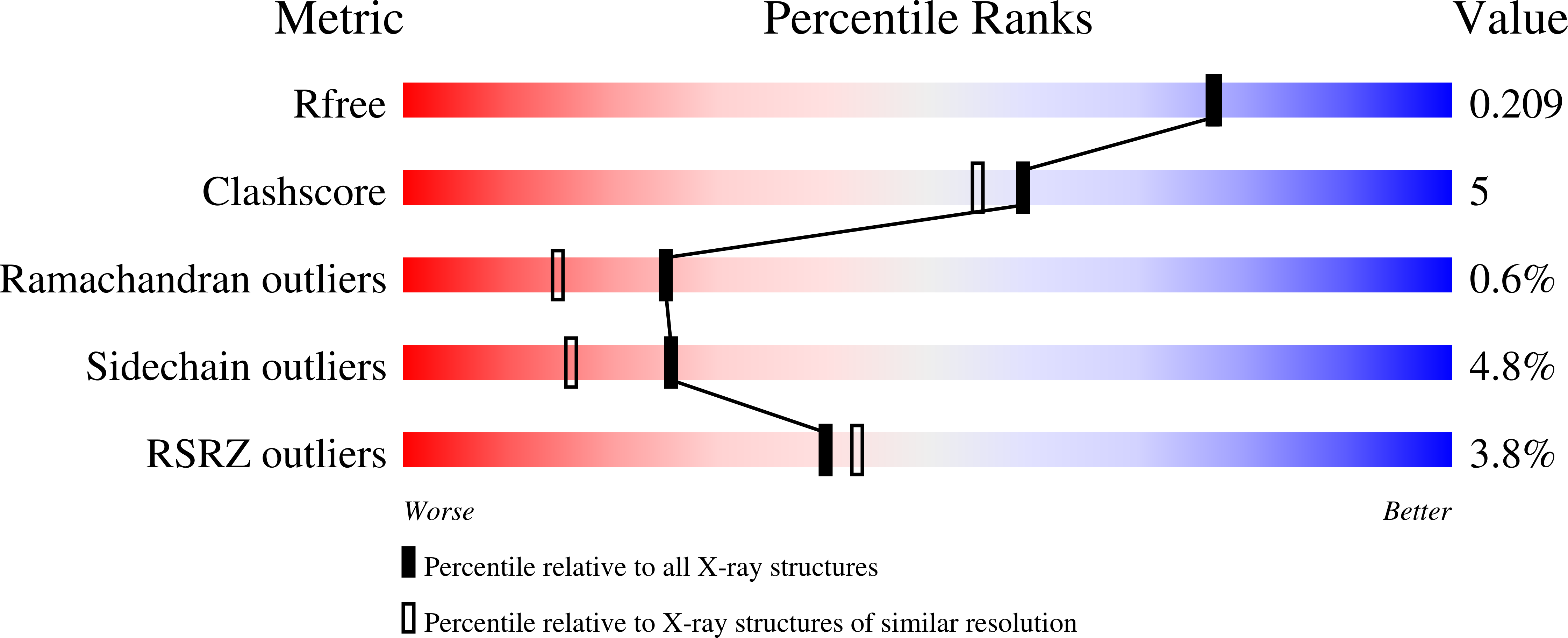Crystal Structures of the LsrR Proteins Complexed with Phospho-AI-2 and Two Signal-Interrupting Analogues Reveal Distinct Mechanisms for Ligand Recognition.
Ha, J.H., Eo, Y., Grishaev, A., Guo, M., Smith, J.A., Sintim, H.O., Kim, E.H., Cheong, H.K., Bentley, W.E., Ryu, K.S.(2013) J Am Chem Soc 135: 15526-15535
- PubMed: 24047255
- DOI: https://doi.org/10.1021/ja407068v
- Primary Citation of Related Structures:
4L4Y, 4L4Z, 4L50, 4L51, 4L5I, 4L5J - PubMed Abstract:
Quorum sensing (QS) is a cell-to-cell communication system responsible for a variety of bacterial phenotypes including virulence and biofilm formation. QS is mediated by small molecules, autoinducers (AIs), including AI-2 that is secreted by both Gram-positive and -negative microbes. LsrR is a key transcriptional regulator that governs the varied downstream processes by perceiving AI-2 signal, but its activation via autoinducer-binding remains poorly understood. Here, we provide detailed regulatory mechanism of LsrR from the crystal structures in complexes with the native signal (phospho-AI-2, D5P) and two quorum quenching antagonists (ribose-5-phosphate, R5P; phospho-isobutyl-AI-2, D8P). Interestingly, the bound D5P and D8P molecules are not the diketone forms but rather hydrated, and the hydrated moiety forms important H-bonds with the carboxylate of D243. The D5P-binding flipped out F124 of the binding pocket, and resulted in the disruption of the dimeric interface-1 by unfolding the α7 segment. However, the same movement of F124 by the D8P'-binding did not cause the unfolding of the α7 segment. Although the LsrR-binding affinity of R5P (Kd, ∼1 mM) is much lower than that of D5P and D8P (∼2.0 and ∼0.5 μM), the α-anomeric R5P molecule fits into the binding pocket without any structural perturbation, and thus stabilizes the LsrR tetramer. The binding of D5P, not D8P and R5P, disrupted the tetrameric structure and thus is able to activate LsrR. The detailed structural and mechanistic insights from this study could be useful for facilitating design of new antivirulence and antibiofilm agents based on LsrR.
Organizational Affiliation:
Division of Magnetic Resonance Research, Korea Basic Science Institute , Yangcheong-Ri 804-1, Ochang-Eup, Cheongwon-Gun, Chungcheongbuk-Do 363-883, Republic of Korea.















